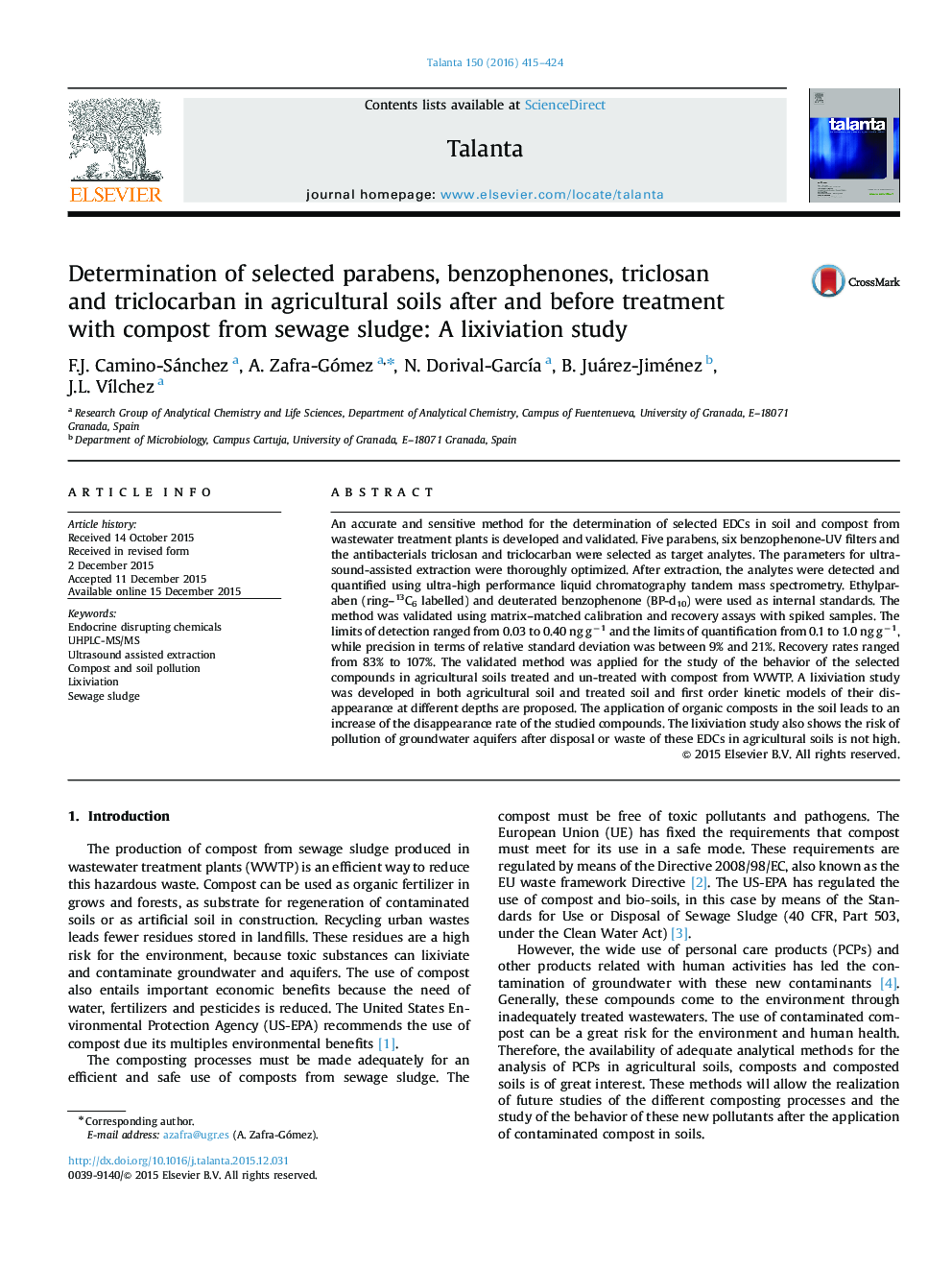| کد مقاله | کد نشریه | سال انتشار | مقاله انگلیسی | نسخه تمام متن |
|---|---|---|---|---|
| 1242188 | 1495785 | 2016 | 10 صفحه PDF | دانلود رایگان |
• Analysis of 13 endocrine disrupting chemicals in soil and compost from sewage sludge.
• Ultrasound assisted extraction is used for the isolation of analytes from samples.
• Sample treatment is optimized using a multivariate optimization strategy.
• The proposed analytical method to measure EDCs in soil and compost is validated.
• A lixiviation study in amended and non-amended agricultural soil is carried out.
An accurate and sensitive method for the determination of selected EDCs in soil and compost from wastewater treatment plants is developed and validated. Five parabens, six benzophenone-UV filters and the antibacterials triclosan and triclocarban were selected as target analytes. The parameters for ultrasound-assisted extraction were thoroughly optimized. After extraction, the analytes were detected and quantified using ultra-high performance liquid chromatography tandem mass spectrometry. Ethylparaben (ring–13C6 labelled) and deuterated benzophenone (BP-d10) were used as internal standards. The method was validated using matrix–matched calibration and recovery assays with spiked samples. The limits of detection ranged from 0.03 to 0.40 ng g−1 and the limits of quantification from 0.1 to 1.0 ng g−1, while precision in terms of relative standard deviation was between 9% and 21%. Recovery rates ranged from 83% to 107%. The validated method was applied for the study of the behavior of the selected compounds in agricultural soils treated and un-treated with compost from WWTP. A lixiviation study was developed in both agricultural soil and treated soil and first order kinetic models of their disappearance at different depths are proposed. The application of organic composts in the soil leads to an increase of the disappearance rate of the studied compounds. The lixiviation study also shows the risk of pollution of groundwater aquifers after disposal or waste of these EDCs in agricultural soils is not high.
Figure optionsDownload as PowerPoint slide
Journal: Talanta - Volume 150, 1 April 2016, Pages 415–424
